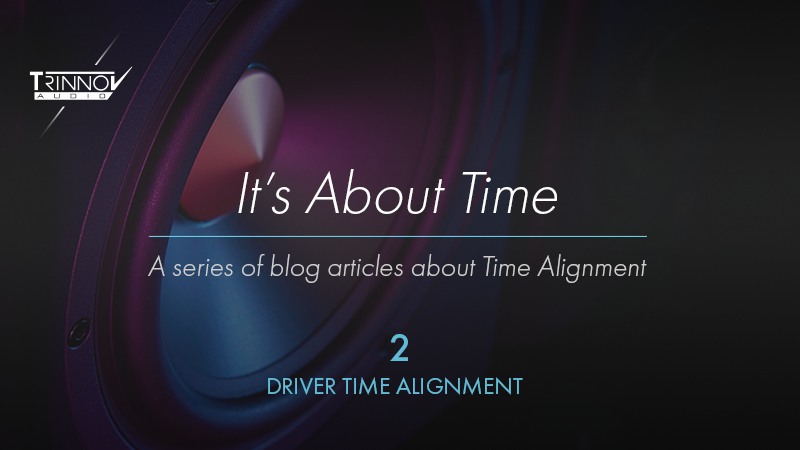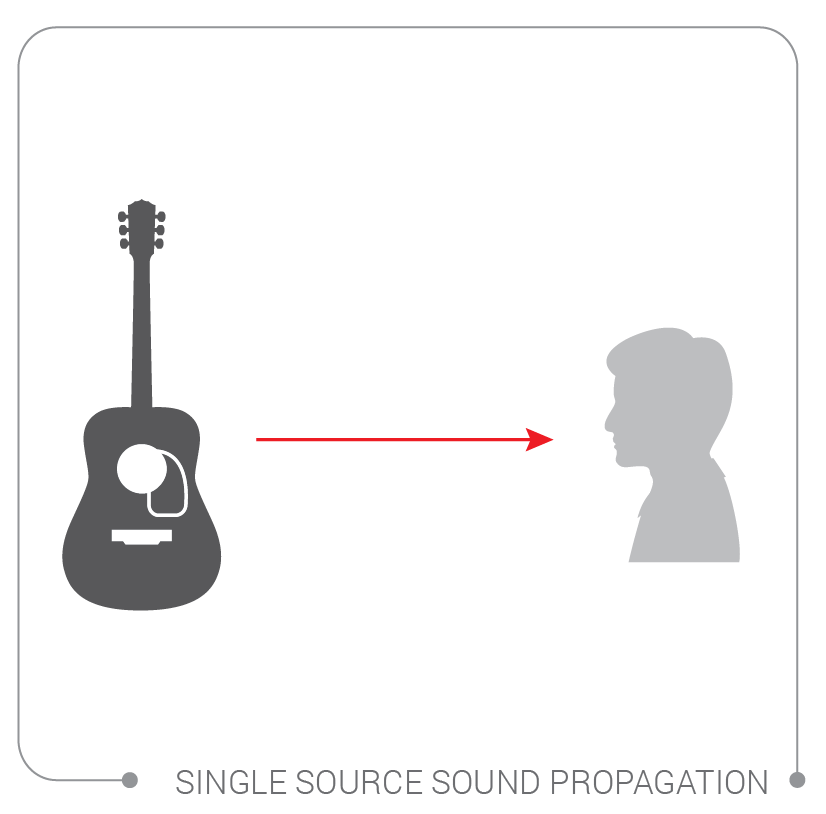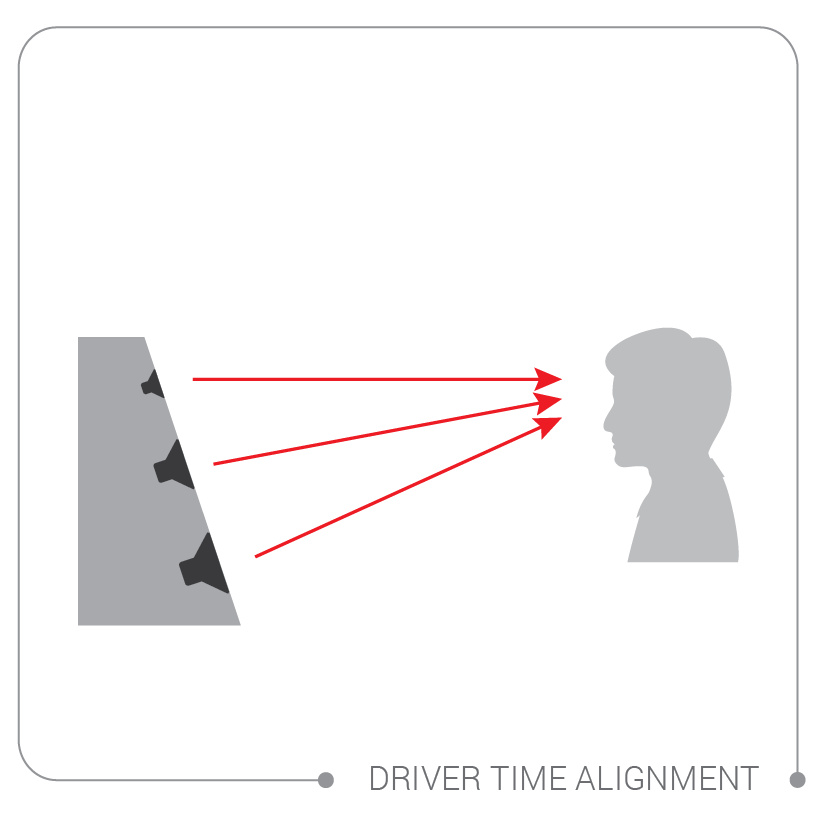It's About Time #2: Driver Time Alignment
A series of blog articles about Time Alignment
24 April 2024
Technical Articles

In the previous article, we talked about speakers alignment and how it can benefit all types of environment. In addition to making sure that each speaker is delayed so as to match the arrival time of the one that is furthest from the MLP (Main Listening Position), almost all speakers can also benefit from improved time alignment of the individual drivers within the speaker.
Normally, in nature, we hear all of the frequencies associated with a sound at the same time. For example, when a guitar string is plucked, you hear its fundamental note and all of the associated harmonics (multiples in frequency) of that note at the same time. The speed of sound is the same regardless of frequency, so everything arrives together.
With reproduced sound, this cannot be assumed. The different frequencies are usually divided up between two or more individual drivers: woofers for the bass, midrange drivers for middle frequencies, and tweeters for the treble.

These differences in arrival times from the different drivers mean that the bass, midrange, and treble portion of that guitar string’s sound will no longer arrive together. These timing differences affect the way the three portions of the original signal recombine at the listener’s ear: they introduce frequency response aberrations as well as confused, imprecise imaging. It might still sound “good,” but it is less likely to sound real.

Good loudspeaker design attempts to account for these timing differences in a variety of ways including sophisticated crossovers and stepped and/or sloping baffles to physically line up the acoustic centers of the different drivers.
As a result of this division (and other traits of the speakers themselves), it is entirely possible – even likely – that some frequencies will arrive at your ear before others do. As much as this is not something we normally hear in nature, this “smearing” of the sound is perceived as less “real.”
But even here, there are factors beyond the control of the speaker designer. In the case above, some assumptions need to be made about precisely where the listener’s ears will be relative to the speaker. Try as he might, the speaker designer simply does not have total control over the result of his or her labors.
Aligning drivers with Active Crossovers
Ideally, the alignment of the drivers should not end with the design of the speaker. It should also be fine-tuned for the specific room, especially as regards where the listener is relative to the speakers. With almost all speakers, used by themselves, this is simply not possible. As a result, the inconsistent arrival times from the different drivers in each speaker introduce a timing (phase) error that creates massive problems at the crossover frequencies, introducing cancellations and resulting dips in the frequency response.
When using the Active Crossovers found in the Altitude, we provide an automated calibration process for the different “ways” of the speaker, in order to get things right even before the normal Optimizer calibration. Thus, for a tri-amplified speaker, we can control both the precise level and delay of each range of frequencies with respect to both of the other ones. The algorithm is designed to maximize the smoothness of the transition from one driver to the next. Since the microphone is placed at the Reference position where the owner’s head will be, it effectively “steers” the best sound that those drivers can reproduce together to the main listening position.

Note the adjustments to both level and delay used to focus the best sound at the listening position
Key Takeaways
Unlike in nature, reproduced sound from different drivers will not arrive at the same time, and therefore needs time alignment. Active Crossovers from the Altitude provides an automated solution by calibrating the different drivers and time aligning them with delay. In the next It's About Time article, we will see how time alignment becomes even more challenging when introducing subwoofers.
Related articles:

